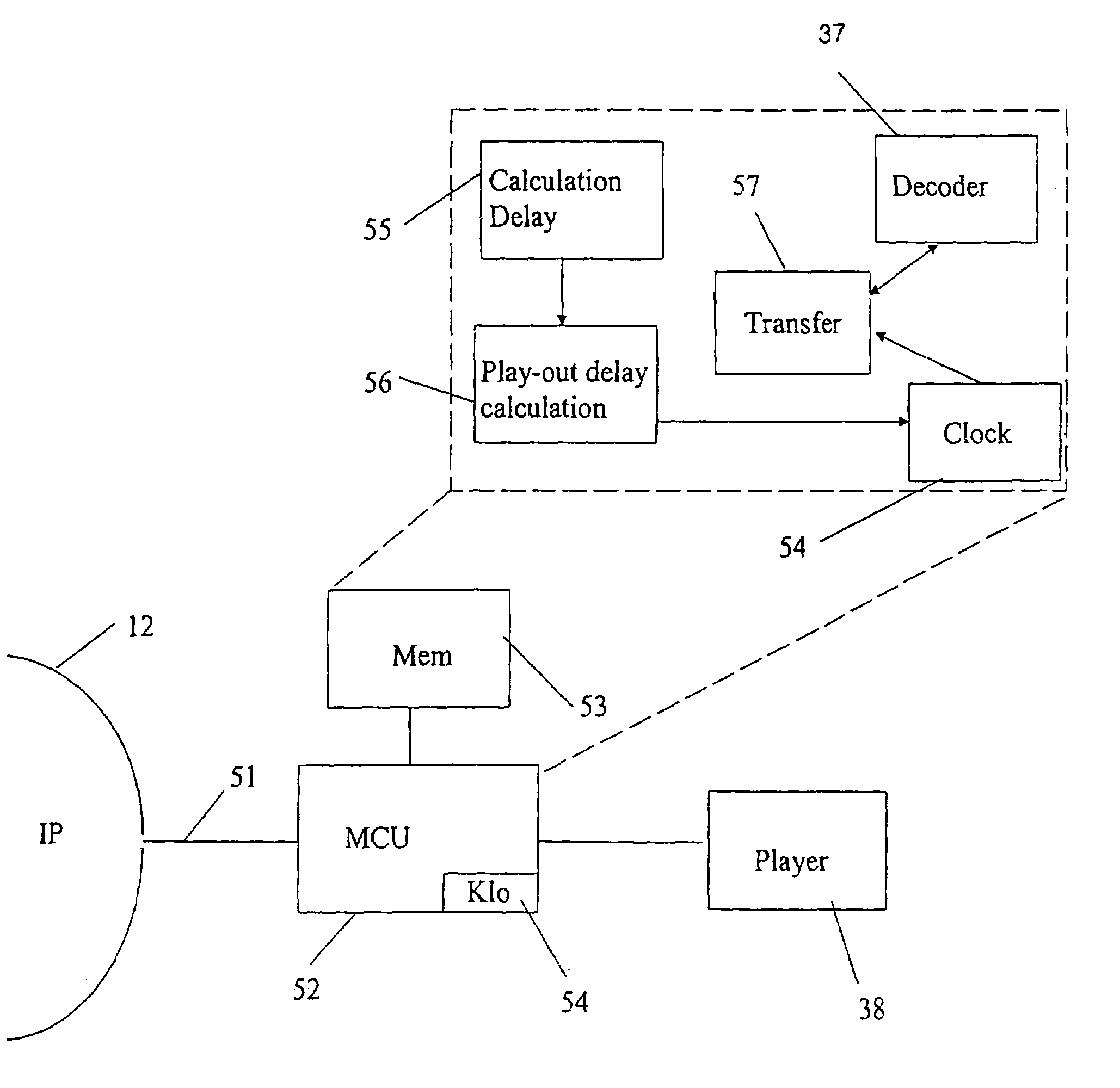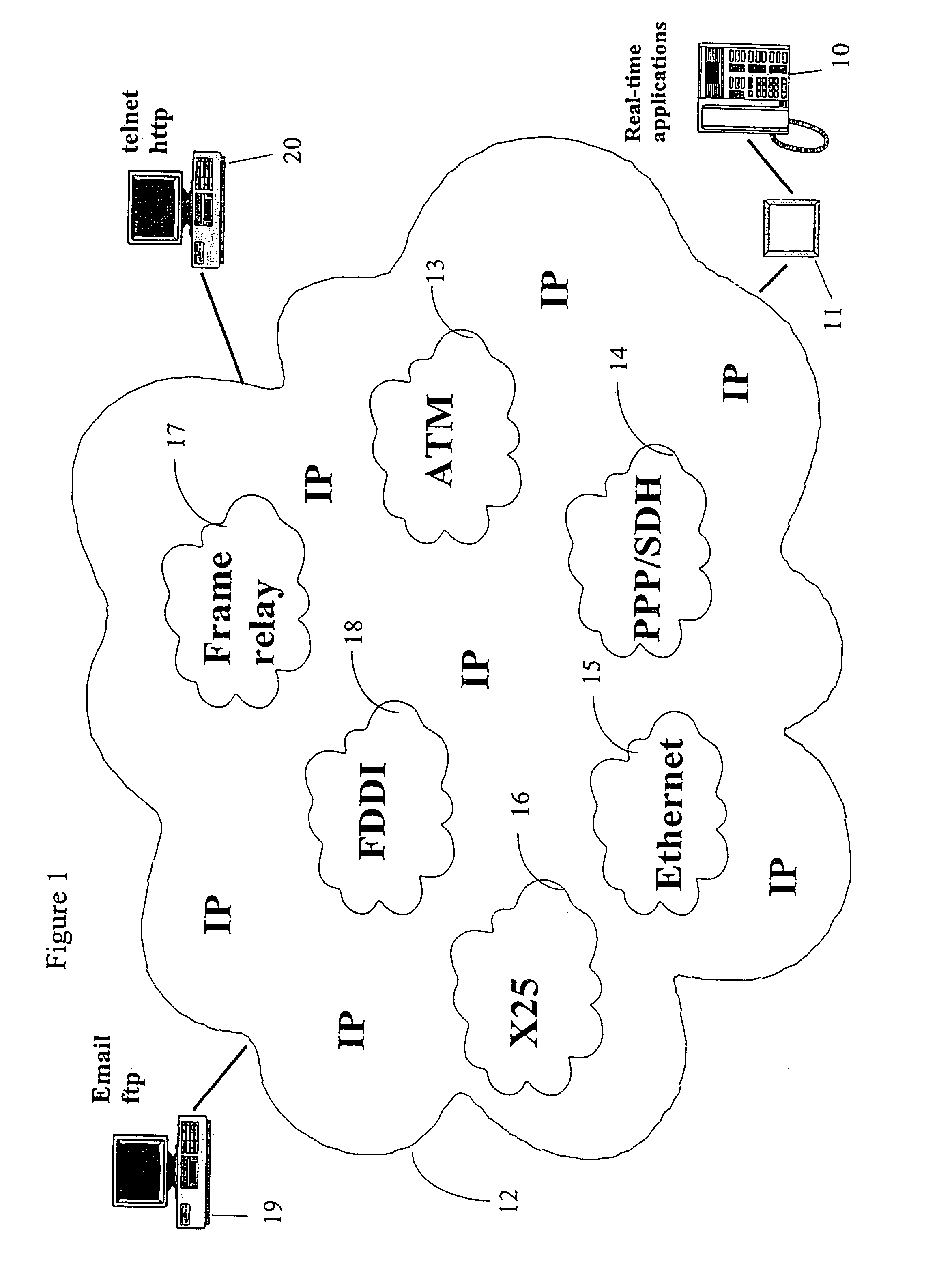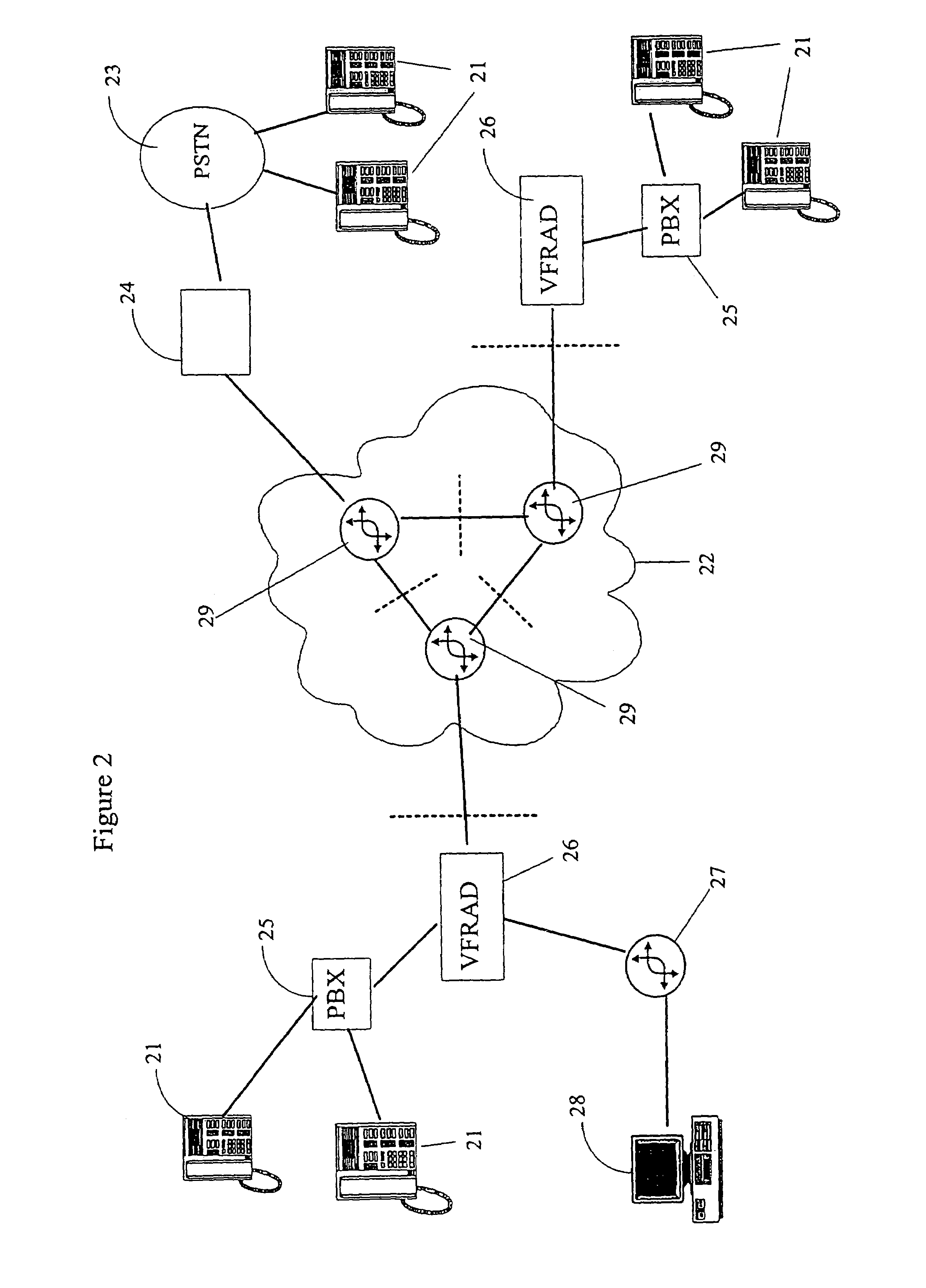Method and a device for timing the processing of data packets
a data packet and processing method technology, applied in the field of methods and devices for timing the processing of data packets, can solve the problems of consuming a lot of data transmission resources, affecting ineffective digital telephone networks presented above, so as to improve the experience quality of service, the effect of easy and simple method and devi
- Summary
- Abstract
- Description
- Claims
- Application Information
AI Technical Summary
Benefits of technology
Problems solved by technology
Method used
Image
Examples
Embodiment Construction
[0027]FIG. 1 shows in general a preferred operating environment of a device according to an embodiment of the invention, as a block diagram. The operating environment comprises a terminal 10 that uses real-time applications, such as, e.g. VolP or packet-based video, which terminal can be, for example, a VolP phone, a videophone, a real-time interactive video conference application of a computer, etc. The terminal 10 is through an adapter 11 that may consist of, e.g. a gateway located in a Public Switched Telephone Network (PSTN), connected with an IP-based network 12 (IP cloud, Internet Protocol), such as, e.g. the Internet. The Internet is, in a simplified manner, a network formed of different networks, that supports TCP / IP-based applications, such as, e.g. WWW (World Wide Web), SMTP (Simple Mail Transfer Protocol) email or FTP (File Transfer Protocol). The sub-networks that form the Internet can be, for example, ATM—13 (Asynchronous Transfer Mode), PPP / SDH—14 (Point-to-Point Proto...
PUM
 Login to View More
Login to View More Abstract
Description
Claims
Application Information
 Login to View More
Login to View More - R&D
- Intellectual Property
- Life Sciences
- Materials
- Tech Scout
- Unparalleled Data Quality
- Higher Quality Content
- 60% Fewer Hallucinations
Browse by: Latest US Patents, China's latest patents, Technical Efficacy Thesaurus, Application Domain, Technology Topic, Popular Technical Reports.
© 2025 PatSnap. All rights reserved.Legal|Privacy policy|Modern Slavery Act Transparency Statement|Sitemap|About US| Contact US: help@patsnap.com



